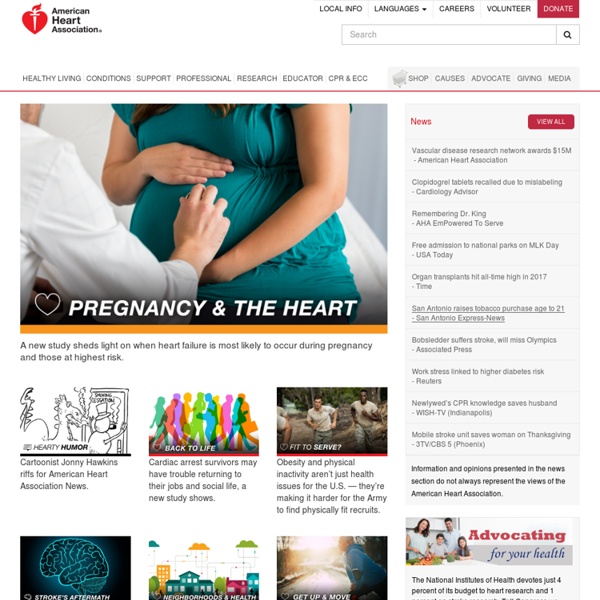American Heart Association
http://www.heart.org/HEARTORG/
CardioSource - Home
Science
2012 | 335 Pages | ISBN: 0930872886 | EPUB | 1 MB This is the most comprehensive gathering of Inayat Khans teachings on the mind and its potential, and contains material which has not been published e... English | 2014 | ISBN: 1493903659 | ISBN-13: 9781493903658 | 230 pages | PDF | 6,7 MB Protein Structure Prediction, Third Edition expands on previous editions by focusing on software and web servers. ... 2014 | ISBN-10: 1848214634 | 96 pages | PDF | 1 MB An ideal resource for students, industrial engineers, and researchers, Signal Processing with Free Software Practical Experiments presents practical ... ( Category:DSP Date:25 Mar 2014 )
Health Care Information, News and Education for Healthy Living
Aware Assess Manage Organize Discover Benefits of water aerobics
How to Identify Cardiac Arrhythmias (With Videos) And Nursing Responsibilities
Ever wonder how nurses and doctors be able to read ECG papers at ease? How they differentiate atrial tachycardia from atrial fibrillation or on how to even know what atrial fibrillation or tachycardia is? ECG reading takes some serious skill, a keen eye and a good theoretical foundations on the different dysrhythmias and the concepts around heart’s conduction and about the ECG machine itself. It takes time to develop a skill in interpreting ECGs, but once you get the hang of it, you’ll be able to interpret any squiggly line in the ECG paper. So What’s an ECG?
The Source for Interventional Cardiovascular News and Education
College of American Pathologists - CAP Home
Health and Medical Information : Health and Medical Directory since 1995
New Technologies in Nursing Education on ADVANCE for Nurses
Section Sponsored by: Since the first light bulb flickered on (and well before, if we're honest), technology has both changed and invaded our lives. It has transformed the way we communicate, travel, eat and shop.
Grogono's Acid-Base Tutorial
Related:


